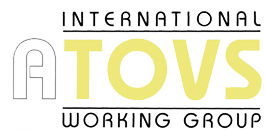Line by line model status summaries
Line-by-line model developers are invited to provide a status summary of their model to the RTSP-WG co-chairs. The material provided is posted here.
Reference Forward Model (RFM)
Latest official release: Version 4.25
Web address: www.atm.ox.ac.uk/RFM
Code access: available on request from dudhia@atm.ox.ac.uk
License requirements: freeware
Language: Fortran 77
Features
Technical features (as listed on the web-page)
* Spherical or plane-parallel atmospheres, or homogeneous paths
* Field-of-View & Instrument Line Shape convolutions
* CO2 Line mixing
* Continua for H2O (MT_CKDv1), O2, N2 and CO2
* Non-LTE (via user-supplied vibrational temperatures)
* Select lines of particular isotopes and/or bands
* Jacobians (Weighting functions) for p, T, VMR, line-of-sight
pointing, surface temperature and emissivity and vibrational temperatures
computed by simple numerical perturbation of appropriate ray path elements
* Satellite/Balloon & Aircraft/Ground-based viewing geometries
* Surface reflections
* Output spectra of radiance, transmittance, absorption, cooling
rates, optical depth and/or brightness temperature
* Output diagnostics from ray-tracing (including Curtis-Godson
integrations)
* Output/Input absorption coefficient tabulations k(nu,p,T)
* Horizontal structure in the atmosphere
* Flux calculations and matrices.
* Different isotopic mixing ratio profiles
* No scattering
User guide: http://www.atm.ox.ac.uk/RFM/sum.html
k-Compressed Atmospheric Radiative Transfer Algorithm (kCARTA)
Latest official release: Version 1.10
Web address: http://asl.umbc.edu/pub/kcarta/kcarta.html
Code access: visit http://asl.umbc.edu/pub/packages/kcarta.html for download information
License requirements: freeware (please mention you used kCARTA when you write a publication, give a talk etc!)
Language: Fortran 77
Features
* continually refining atmospheric molecular spectroscopy
based on analyzing lab data and AIRS validation campaigns
* can do analytic jacobians extremely rapidly
* we plan to include NLTE and/or scattering algorithms with
future releases of the code (they have already been prototyped)
User guide: De Souza-Machado, S. and Strow, L. L. and Motteler, H.E. and Hannon, S.E., kCARTA : An Atmospheric Radiative Transfer Algorithm using Compressed Lookup Tables, Department of Physics, University of Maryland Baltimore County http://asl.umbc.edu/pub/packages/kcarta.html
Kahlsruhe Optimised and Precise Radiative transfer Algorithm (KOPRA)
Latest official release: Version 3.0.7
Web address:
Code access: on request from Michael.Hoepfner@imk.fzk.de
License requirements: user license agreement with Forschungszentrum Karlsruhe required
Language:
Features
* Observer position: inside and outside atmosphere
* Observation geometry: limb, nadir, slant path at any angle
* Thermal emission and solar absorption
* Explicit inclusion of solar lines
* Ray-tracing in 3-d curved atmosphere
* Radiative transfer in 1-d, 2-d or 3-d temperature and trace-gas fields
* Hitran line-list gases
* Pressure-temperature dependent cross-sections of heavy molecules
* H2O, CO2, O2, N2 - continua
* Chi-factor correction of CO2, H2O line-wings
* Line-mixing (exact: direct diagonalization, approx.: Rosenkranz)
* Frequency-grid and line-profile optimized line-by-line calculation
* Non-LTE: vibrational and rotational non-LTE either via
vibrational temperatures or via coupled explicit atmospheric non-LTE model
* Particles: single scattering in curved atmosphere;
optical properties: either direct input or internal calculation via
coupled Mie-model
* Instrumental: field-of-view, line-shape, channeling, spectral shift,
radiance calibration
* Analytical Jacobians: pressure, temperature, gas-vmrs, pressure
gradient, temperature gradient, vmr-gradient vibrational temperatures,
non-LTE parameters (non-LTE model), particle size distribution parameters
and particle composition parameters (Mie-model), instrumental line-of-sight,
wavenumber-shift, radiance offset and scale, instrumental line-shape
User guide: The Karlsruhe Optimized and Precise Radiative transfer Algorithm (KOPRA) G.P. Stiller (Editor) with contributions from T. v. Clarmann, A. Dudhia, G. Echle, B. Funke, N. Glatthor, F. Hase, M. Höpfner, S. Kellmann, H. Kemnitzer, M. Kuntz, A. Linden, M. Linder, G.P. Stiller, S. Zorn, Forschungszentrum Karlsruhe, Wissenschaftliche Berichte, Bericht Nr. 6487, 2000. http://www-imk.fzk.de/asf/ame/publications/kopra_docu/kopra_docu.html
